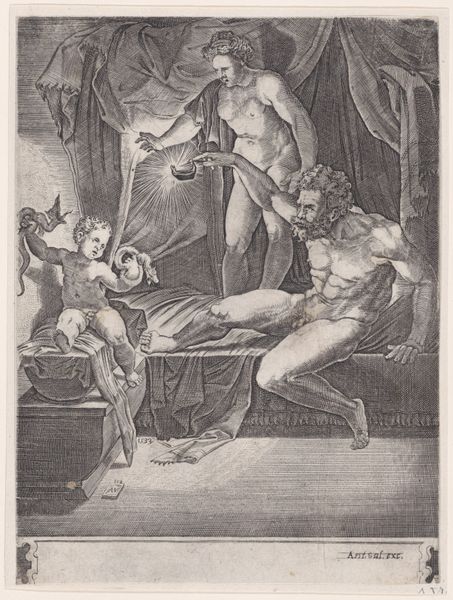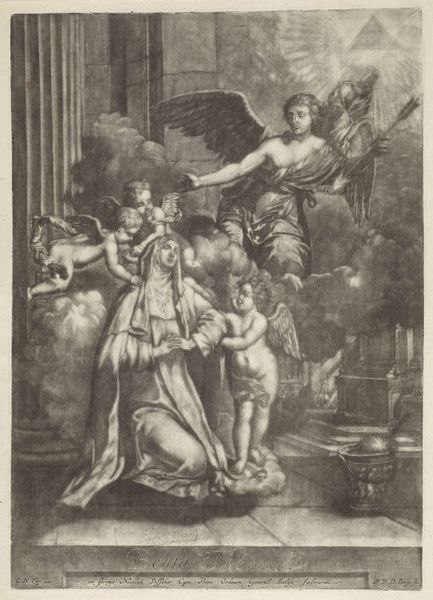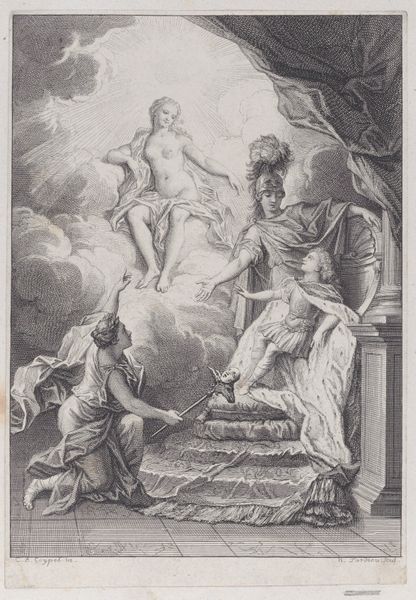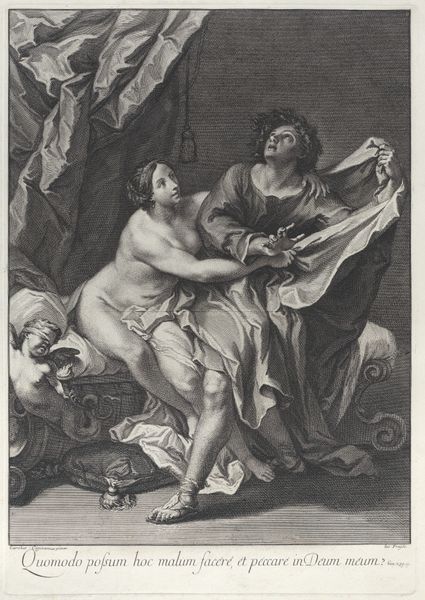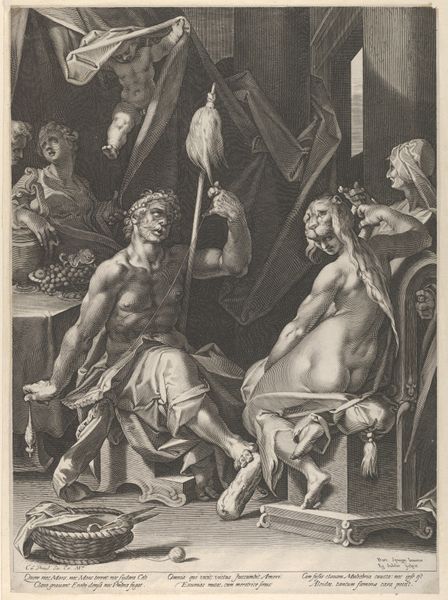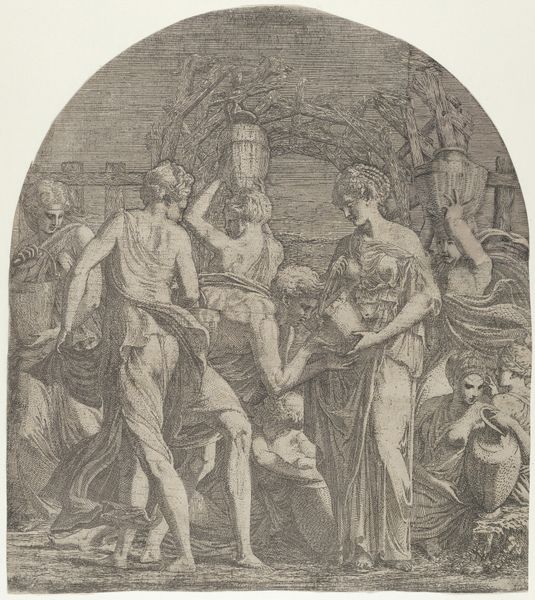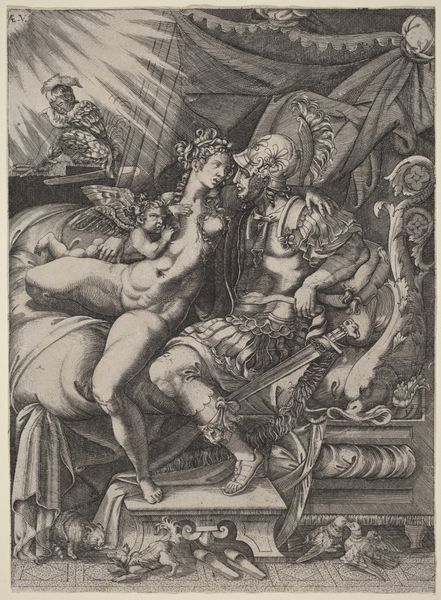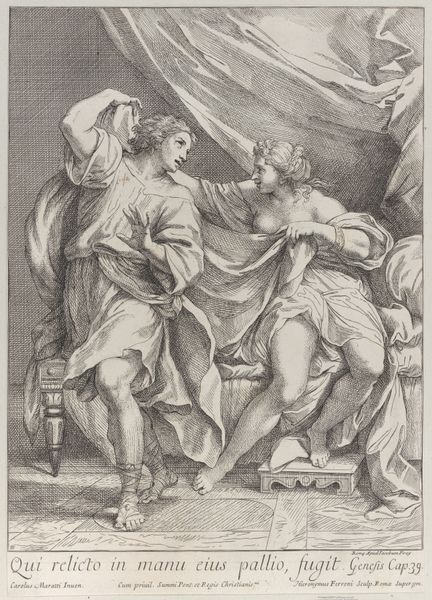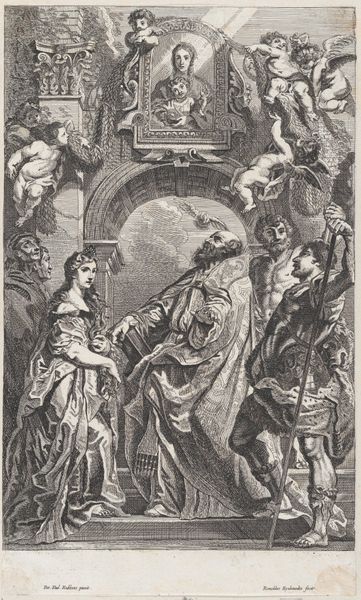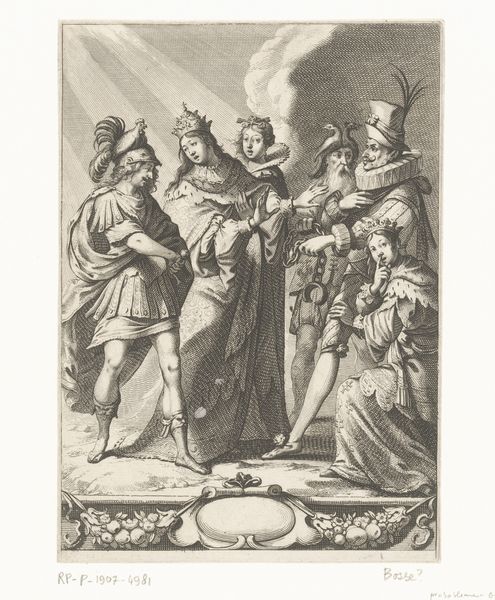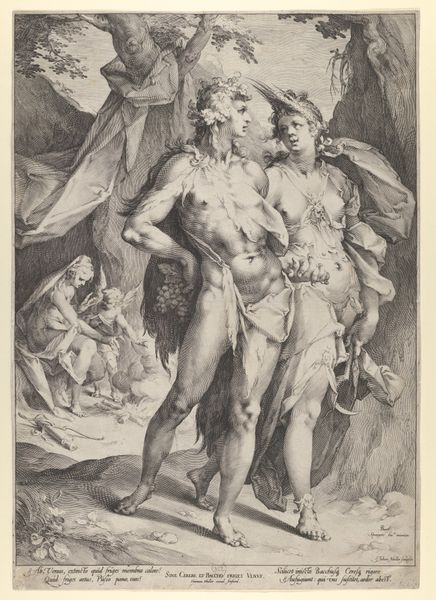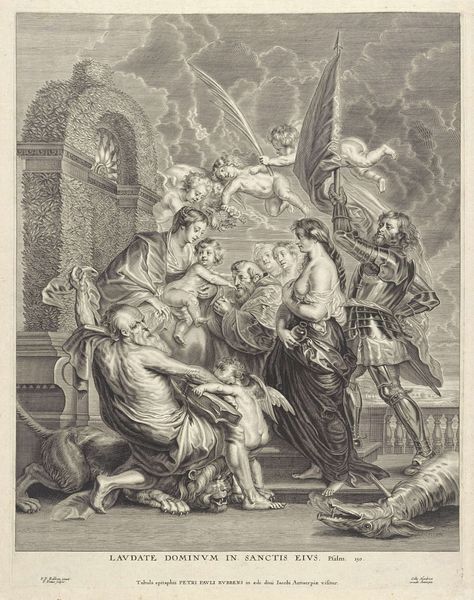
engraving
#
allegory
#
baroque
#
charcoal drawing
#
figuration
#
line
#
history-painting
#
engraving
Dimensions: height 643 mm, width 515 mm
Copyright: Rijks Museum: Open Domain
Editor: Here we have "Elijah Fed by an Angel," an engraving by Conrad Lauwers, created sometime between 1642 and 1685. The texture created through the engraving process is really striking. How do you interpret this work through the lens of its materiality? Curator: The emphasis on engraving invites an analysis centered on production. What were the economics of printmaking in the 17th century? These images weren’t precious single objects; they were reproducible, designed for circulation. Notice how the dramatic narrative becomes a commodity, disseminated through workshops and trade networks. Editor: That’s a really interesting point, reframing the artwork within a larger context of labour. The religious narrative feels very intentional. How does that interplay with material conditions of its production? Curator: Precisely. Consider who the audience was for such prints. The image provided spiritual instruction and devotional prompting. This becomes part of the consumption of faith through reproducible goods. Were these readily available? Was the artist engaged to create many works like these? The details reveal more information when thinking of accessibility, distribution and affordability. Editor: It really alters my understanding, moving away from the singular “art object” toward something embedded in material culture. Are there other elements of the image that highlight this dynamic? Curator: Absolutely. Look closely at the line work. The engraver uses variations in line thickness and density to create shading and texture. That is not just artistic expression. The labor itself, the repetitive action of cutting lines into the plate, represents human effort embedded within the image itself. Every mark is a testament to craft and deliberate labor. The circulation of these prints allowed spiritual themes to penetrate diverse strata of society through physical, tangible objects. It shifts the meaning of divine intervention into social interaction. Editor: So much more than just a story; it's a product of a whole economic system! I will never look at engravings the same way again. Curator: And it demonstrates the complex interactions between art, material and social life. A deeper analysis could be achieved thinking about the artist’s life too.
Comments
No comments
Be the first to comment and join the conversation on the ultimate creative platform.
